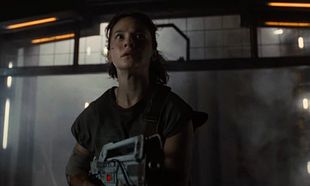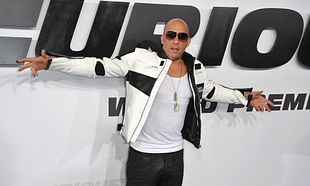Cuba has always been a place of mystery, music, intrigue and history, so it's no surprise that there's such a diverse and colourful mixture of movies from the island. With that in mind, let's get started.
10. 'Viva'
Although directed and written by Irishmen Paddy Breathnach and Mark O'Halloran, 'Viva' grapples with aspects of Cuban society in a very naturalistic and often funny way. Héctor Medina plays a hairdresser who dreams of becoming a drag queen, and reconnects with his estranged and ultra-macho ex-convict father. Despite it being primarily set in Cuba and featuring Cuban actors, there's a wry sensibility to it that feels both singularly Irish and very Cuban at the same time.
9. 'Una Noche'
'Una Noche' plays like a tense thriller, but also a heartbreaking drama. Three teenagers - all of them in their debut roles - plot to escape Cuba on a makeshift life raft, but have to keep up pretenses among their parents that they have no intention of leaving. Like so much of Cuban cinema, 'Una Noche' has a real naturalism to it that makes it authentic and lived in, while also capturing the vibrancy and colour of Havana.
8. 'Papa: Hemingway in Cuba'
If there's one literary figure associated with Cuba and Cuban culture, it's Ernest Hemingway. The author spent much of his later life in Cuba, and the movie sees Hemingway meet and come to a friendship with an aspiring writer and journalist, played by Giovanni Ribisi. While there's been no definitive movie on Hemingway, 'Papa: Hemingway in Cuba' is as good a primer as any going.
7. 'Sergio and Sergei'
In a similar vein to 'Goodbye, Lenin!', 'Sergio and Sergei' is set during the fall of the Soviet Union and sees a professor of Marxism in Cuba - who also happens to be a ham radio enthusiast - strike up a friendship with a stranded Cosmonaut aboard the space station Mir. The funny part of 'Sergio and Sergei' is that it's loosely based on a true story. In 1991, Soviet cosmonaut Sergi Krikalev was stranded aboard Mir and saw him stay aboard the station for 311 consecutive days, twice as long as he was originally planned for.
6. 'Chico and Rita'
Cited by Mark Kermode as one of his best films of 2010, 'Chico and Rita' is a zesty, vibrant animated musical romance set in pre-revolutionary Cuba and follows a piano player and singer as they struggle through success, failures, and heartbreak. Much like 'Buena Vista Social Club' (which tops our list), 'Chico and Rita' has a gorgeous soundtrack that evokes all of the rhythm of the island and captures its beauty through gorgeous animation.
5. 'Campesino'
Based on the black-and-white images of amateur Carl Oelerich, 'Campesino' follows the tobacco farmers of Cuba, specifically those who worked in the village of Viñales, and how their hand-grown, hand-curated ways of life are slowly disappearing over the fifteen years that Carl has been going there. As much as it's a documentary about photography and the quiet fervour that Carl has for the medium, it also zeroes in on the dignity and the pride with which the campesino - which loosely translates to tenant farmer in English - have for their land and their craft.
4. 'Salut les Cubains'
Agnés Varda's documentary work in the sixties captured the change and upheaval in her native France, but also across the globe. In 1963, Varda travelled to Cuba and came back with footage for a short documentary film for French television - 'Salut les Cubains' was that product. Made from over 4,000 photos that Varda took, 'Salut les Cubains' sees the director taste the excitement of the Cuban revolution, its bold vision of socialism, and how music and dance were just as important to the revolution as was equality and self-determination.
3. 'Viva Cuba!'
As much as any movie in Cuban cinema has, 'Viva Cuba!' grapples with Cuba's emigration policies and the impact it has on extended families. Told through the eyes of two young children - Malú and Jorgito - 'Viva Cuba' explores the difference class structures on the island, and the rapid changes that Cuba has undergone in the last twenty years. Indeed, the movie works like a road trip across the island and the hopes and aspirations of the two kids, and the uncertainty they face, represents Cuba's own uncertain future both as the US opens negotiations and, more recently, post Castro.
2. 'Che: Part One'
Steven Soderbergh's work has mostly been confined to slick crime thrillers, yet when he dipped his toe into biopics, his eye for detail and his ability to hone character brought about one of the most stirring examples of the genre in recent memory. Benicio del Toro is absolutely magnetic as Che Guevara, capturing all of his intensity and charm into his performance, while still retaining the narrative authenticity. The two-part movie is split between Che's campaign in Cuba alongside Fidel Castro and his time in Bolivia. For the purposes of this list, we're focused on 'Che: Part One'. It's also the better of the two movies.
For one, Soderbergh knows how to make a thriller and that's what it really is. A sharp political thriller, set in the mountains of Cuba or on the streets of Havana as Guevera and his soldiers fight in increasingly dangerous circumstances. The train derailment sequence, in particular, is staged to perfection.
1. 'Buena Vista Social Club'
When you think of Cuba, music is always somewhere near the top of every's mind. It's not hard to see why either. It's in every aspect of Cuban society. Buena Vista Social Club was an ensemble of legendary Cuban musicians, brought together for one last album by American music legend Ry Cooder. Out of this came two special performances - one in Amsterdam and the other in New York. German director Wim Wenders captured both Cooder's efforts and the band's issues with attempting to navigate the political tensions in the US as they played.
The resultant album was a massive hit and the documentary was nominated for Best Documentary at the Oscars that year. The album made it on to Rolling Stone's 500 Greatest Albums of All Time in 2003, one of only two non-English-speaking albums to be added to the list.








































































